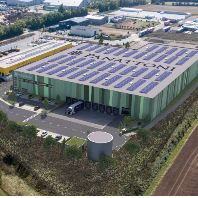At the beginning of this year over 3.3 million m2 of office space was offered to let, which is an increase of 37% compared to the previous year.
Research from DTZ Zadelhoff and NEPROM (The Netherlands Association of Property Developers and Investors) shows that the supply and demand in the office market in the regions in Southern and Northern Netherlands in particular are out of balance. It is mainly the average office buildings at less favourable locations which are most affected by the drop in demand.
The office market is no longer in balance. For the third year in succession the number of square metres of office space offered to let has increased and the supply is still going up. The Office Space Supply Monitor 2002, which is published by DTZ Zadelhoff in collaboration with NEPROM, shows not only that large regional differences in the market situation exist, but also that specific types of offices recur in the supply figures to an above-average extent. In the regions of Utrecht, Rotterdam and The Hague there is relatively little supply of office space. In Amsterdam and Schiphol – the country’s main office markets – there is relatively more supply available. Last year the supply there went up by 50%. Yet it is particularly the regions outside the Randstad area which are doing less well as far as the office market is concerned. In Groningen, Zwolle, Den Bosch, Breda and Maastricht the amount of office space on offer in relation to the take-up has assumed alarming proportions.
From the Supply Monitor it is clear that it is often the average offices which fall victim to the ample market situation: offices that are not too large at motorway locations with mid-range rents are proving particularly difficult to let. In addition, many of the offices on offer have too few parking spaces as a result of government policy. It is in general still relatively easy to find lessees for offices which are located in the immediate vicinity of railway stations and which are also easily accessible by car.
The research also shows that over 50% of the offices on offer consist of new building developments, a large part of which are still under construction. The high percentage of new buildings is the result of the high building volume of the last few years.
In the mid-nineties this percentage was below 20% for five years. Together with the decline in economic growth the high construction volume has resulted in vacancies in the office market. Although real vacancy - as appears from the research - is still limited, DTZ Zadelhoff and NEPROM expect that when the offices which are currently under construction are completed in 2002 and 2003, vacancy levels will grow fast. In the lessees’ market which this will create, it will be only sensible to proceed with caution with the construction of new office buildings.
(source: DTZ Zadelhoff)






